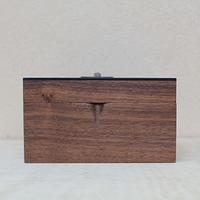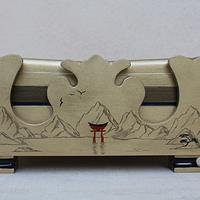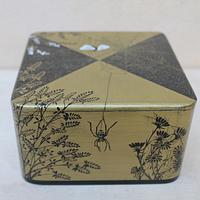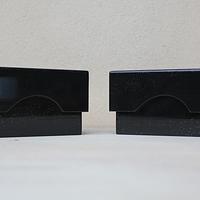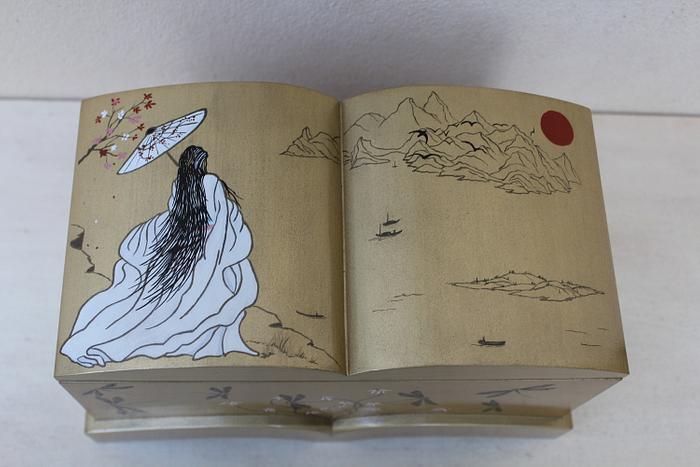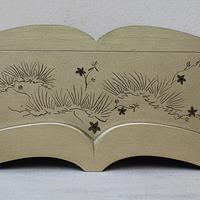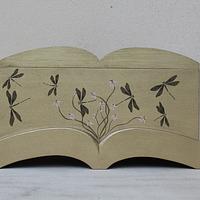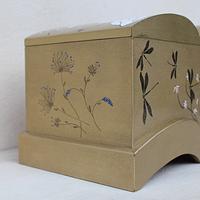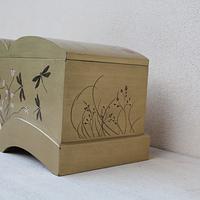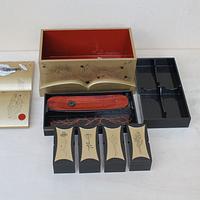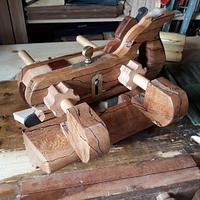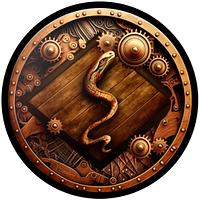
WildBrianWood
in about 3 years
More from WildBrianWood
Box Swap 2023. The mysterious Geisha
I adapted the design to store both incense sticks and incense cones, the sticks lay in the top tray, and the four small boxes in the lower tray are for storing the cones.
The "artwork" is a collection from numerous sources of Japanese and Chinese origin, like embroidery, antique boxes, Sumi-E paintings, Washi-paper screens, and such. Our Mysterious Geisha is a well known figure attributed to a Japanese artist of some antiquity, and she has many interpretations set in different environments. I cannot describe in words how difficult it was to paint her hair with marine varnish, and she remained headless for some days as I was dreading making the attempt. Her head is about 1cm in diameter. To describe just a part of the process - for her dress - I transferred the pattern much like one would for a tattoo, then went over the outline with gold/black tinted lacquer. Next, I filled in the white areas four times to get a solid result, as the tinted varnish is somewhat translucent. Next, I added some slight grey in places to accent the folds of her kimono. Then, I went over the outline again to make the lines crisp. The boats were also rather difficult to "paint" well, the perspective and sizing took me a few attempts at a result I was satisfied with. Then, two tiny little marks, and that is supposed to be a human figure.
I will mention the small handles for the top pull-out tray. These saddle the center divider, and are tapered at three different angles so they lean inward so as to allow fingers to grasp them without too much fuss - for slender fingers!. I used Gabon Ebony for those, as Basswood, which makes up the rest of the box, is too soft and would have gotten torn to shreds from the shaping that gives these handles a delicate curvature.
The incense burner is made from genuine Indian Rosewood that gives off that wonderful rosy smell when cut. The bottom has a sculpted curvature so if pressing down on one end, the other end pops up for easy removal. I added a small section of brass tubing on one end where the incense sticks are held upright, so as to prevent the wood from getting burned. There is an additional spiky metal ring to sit the cones on when burned. I was going to inlay that ring, and then didnt.
I used half-lap joints for the sides of the pull-out trays as I already had the saw set up for this to do the divider in the lower tray. I thought this was a good idea, or was just lazy, hmmm? And then, I didnt think it a good idea after glue-up because this joint maybe wasnt strong enough. Turns out, this is somewhat common joint used in Japanese box-making.
I made the assumption that my recipient, Jeff Wildwood, wasnt the type of guy who burns incense to cover up the smell of you-know-what, so I included some velvet lined bottoms to slip into the four small boxes, if he wished, and these boxes could then be used to store jewelry or other precious items.
Box dimensions, I think, are harmonious, at 24cm wide X 12cm deep X 12 cm high. All stock is 5mm, except the pull-out trays, which are 3mm. The bottoms of these are rabbeted.
Due to time constraints, I did cut some corners. There are brush marks evident - which is bad, very very bad. And some other issues I am not pleased with. I do believe that if I were to present this work to a Japanese Master - he would inspect it closely, then throw it in the garbage, and say - come back in ten years and we will see, Grasshopper.
I am glad I participated in the Swap. The bantor in those threads is always fun. And I have to say that everyone really turned it out for this one.
If anyone has specific questions, I will be happy to address them.
Thanks for viewing; and have a great day!
No Bees. No Honey. Bees Lives Matter
28 Comments
This work is very impressive.
Beautiful.
Petey
Thank you for participating in the Swap.
Main Street to the Mountains
Ron
I see something else every time I look, just amazing!
There's roosters laying chickens,and chickens laying eggs... John Prine
WOW GR8 JOB 😍😎👍
*TONY ** Denver * ALWAYS REMEMBER TO HAVE FUN
working with my hands is a joy,it gives me a sense of fulfillment,somthing so many seek and so few find.-SAM MALOOF.
May you have the day you deserve!
Your passion is showing. 😉👌👍
The early bird gets the worm but its the second mouse that gets the cheese.
No name noobie here
Your skill is top shelf Brian and gets better with every build.
Sorry I couldn’t read all of the story because when I blink I lose my place because of the lack of paragraphs. I did read the two at the bottom.
I’ll try to read it on my larger laptop.
James McIntyre
Hairy - yes, my Wife said - are you seriously going to just give that away!
Paul - My Passion is showing? Omg. Blush. I swear, I am wearing pants.
Pottz - Tricky, yes. Takes a steady hand. Do you know where I can find one?
Martin - Building boxes is easy. The rest, not so much. I am at the point now where I think 1000grit sandpaper is rough. And paper towels soaked with MS is very good at erasing mistakes.
No Bees. No Honey. Bees Lives Matter
Pottz - Tricky, yes. Takes a steady hand. Do you know where I can find one?
working with my hands is a joy,it gives me a sense of fulfillment,somthing so many seek and so few find.-SAM MALOOF.
~ Mystery by Design ~
No Bees. No Honey. Bees Lives Matter
Main Street to the Mountains
No Bees. No Honey. Bees Lives Matter









